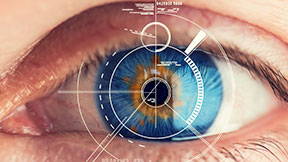Recently, on May 18 and 19, a specific course in all areas of Ophthalmology has taken place in Bilbao that has told us about the novelties of the future and the current studies that are being carried out in our specialty. Below I will detail some of the sections in which we talked about each of our subspecialties.
IN GLAUCOMA
1.-It has been shown that bariatric surgery to reduce stomach weight reduction, also causes a drop in eye strain.
2.-Patients with normotensive glaucoma are patients with hypotension normally and with a higher risk of developing senile dementia.
3.-The new ANGIO-OCT already can indicate the alterations of the retinal microvasculature in incipient glaucoma.
4.-The first adjustable glaucoma correction valve (EYE WATCH) has come out.
5.-Studies are being carried out on slow-release anti-glaucoma treatment consisting of medication injections into the vitreous chamber, ensuring that its effect persists for six months to a year, which would reduce the treatment in eye drops of patients.
6.-Intraocular implantation devices are being perfected for the monitoring of intraocular pressure 24 hours a day.
7.-It has been confirmed that the EPNP technique for glaucoma consolidates as safer with respect to the previous technique of Trabeculectomy.
Regarding REFRACTIVE SURGERY AND CATARACTS:
1.-The simultaneous bilateral surgery, does not have differences regarding safety in relation to the sequenced two or three weeks, although most of the ophthalmologists prefer to do it in two times.
2.-The EDOF Symfony lens has greater dysphotopsia in relation to monofocal lenses, but less than diffractive multifocal lenses.
3.-Over 50% of children presents dysfunction Meibomian glands.
4.-Allogenic segments plus Crosslinking are being tested in the treatment of keratoconus, with good results.
5.-It has been proven that intrastromal implants for presbyopia type Raindrop, produce as a side effect HAZE, (being necessary treatment with Mitomycin C), and alterations in the centering of the same, having to be explanted many of them.
6.-SMILE surgery for myopia, hyperopia and astigmatism, causes greater hypocorrections than the LASIK technique, and the latter offers better visual quality and better correction than the previous one.
7.-Adjustable intraocular lenses with ultraviolet light continue to be studied in the postoperative period, with good results.
8.-There are 80% of men and 50% of women who have difficulty driving at night with Multifocal lenses.
9.-The posterior face of the intraocular lenses is being treated to diminish the negative dysphotopsias.
10.-The Laser guided by topography (CONTOURA) is proving effective in the treatment of corneal aberrations of high order.
11.-The Femtosecond Laser for cataract surgery, is becoming less named in the American congresses of Ophthalmology The cost-effectiveness ratio and the necessity to follow the surgery with the usual procedure of phacoemulsification, as well as no appreciation of the patient’s improvement of the result with respect to classical surgery, gradually diminish the work and publications on the same presented to the medical courses.


Recent Comments